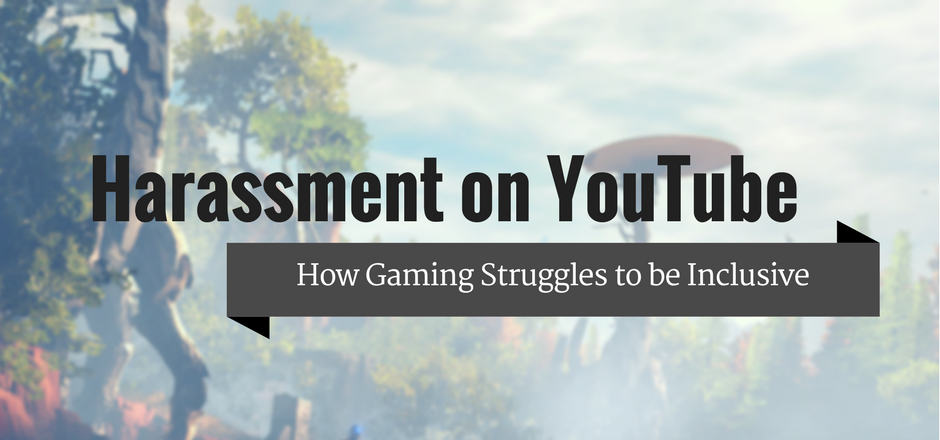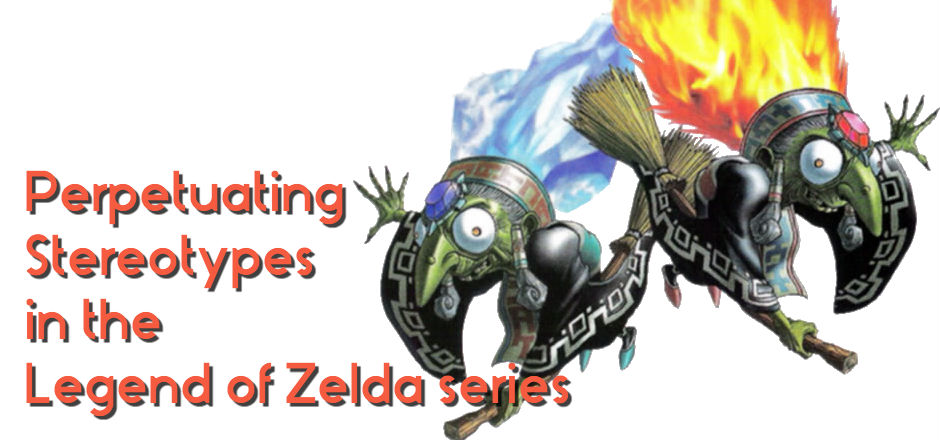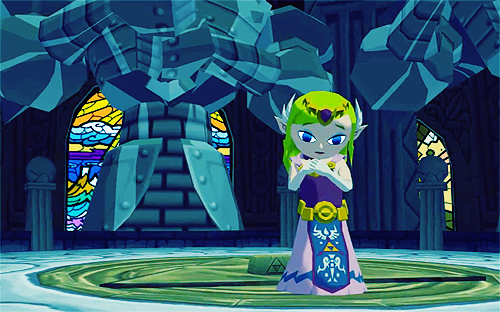Content warning: This article is about gender-targeted harassment on YouTube and contains imagery that may be disturbing or upsetting to readers.
Roses has been making content on the video game commentary YouTube channel PushingUpRoses since 2010, but many male viewers and content creators don’t take her seriously. Even some of her male peers believe that women don’t belong in gaming.
“I recall a very specific instance where I was discussing this very topic [regarding women’s exclusion from the gaming community] with another content creator, and he said, ‘Well, be realistic. You ARE a girl…’ And this was coming from a person who had quadruple the following I had,” she said.
Many male gamers view women as an invasion in the gaming community, resulting in gender segregation within the community as well as serious backlash against women who openly participate, exemplified by the gender-driven harassment many women receive.
Roses described an incident where one of her videos was “dogpiled,” when large groups of people decided to target one of her videos with hate and harassment.
“[The comments] were rolling in one after the other, all comments about my being a woman in some way. Comments saying I should be beaten by my boyfriend, raped, stabbed in the vagina, and other such things that were meant to either gross me out or frighten me,” said Roses. The video targeted wasn’t even one where she expressed a controversial opinion.
She also said other aspects of her life get twisted into a jab against her gender. Roses has discussed mental health issues on her channel, which commenters sometimes interpret as related to her gender. “Even those quips [about mental illness] can be twisted into gender-related insults. ‘You don’t have a mental illness, you are just an attention whore like every other girl,’ or ‘Why are women always so sad on the internet?’,” she said.
(Why is it astonishing that women are upset or anxious when they constantly receive death threats and violent comments about their bodies?)
Besides death threats, Sara Secora, who runs the YouTube gaming channel AviGaming, also receives comments regarding her looks. While not all comments are violent, many commenters still viciously attack women for every aspect of their appearance and personality.
“I’ve been told that the way I look isn’t the way they want me to look, I’ve been told that I’ve gotten heavier and made fun of for that, I’ve been told I shouldn’t even make videos because I’m too ‘stupid, ugly, slutty, etc.’,” she said.
The image of the stereotypical “gamer girl” is another issue women experience in the gaming community. Sara describes the “gamer girl” as an online video personality who “might wear something ‘geeky’ and cut an extremely low V-neck into said outfit just to appeal to [the] audience.”
For her, this is harmful to women who are actually interested in video games because it conditions men to believe women don’t actually like video games and that they only participate in the gaming community to get attention via sex appeal.
Sara has tried to combat this hypersexualization through videos she made on the topic. “Men love these oversexualized women that are into similar things that they like,” she explained. “Even if that girl is just playing into their fantasy to make a quick buck.”
She says this has led to viewers saying she also needs to dress sexually on camera to appeal to men as well as disrespectful comments from male viewers who believe she also needs to dress sexually on camera for their own satisfaction, even though she has no desire to present herself this way.
“I wanted the people who watched my videos to like my content and even my personality, not just my body or looks. I’ve even had friends ask, ‘Why don’t you show some cleavage? It will give you more views,’ which has always angered and disgusted me,” she said. “I don’t make videos because I want these cheap views. I do it because I love gaming and I want to share that with other like-minded people.”
Ana Teixeira, who co-runs the gaming channel 8 Bites, says she occasionally finds similar harassment targeted at herself, which she attributes to being part of the “gamer girl” problem.
“Since there are many channels where females are more focused on sexualizing themselves than actual gaming, the channels that are in fact doing gaming content sometimes get repercussions from that,” Ana said.
The stigma of the “gamer girl” extends beyond hypersexualization. Many male players believe women simply aren’t as good at gaming as men, emphasizing the misconception that female gamers are just looking for male attention. A 2016 study comparing the skill levels of male and female gamers discredited this idea, proving that women progress just as quickly as men in MMOs like EverQuest II and Chevaliers’ Romance III.
Roses expresses similar concern with the prejudices she receives from people online.
“I think the gaming community has a lot of preconceived notions,” she said. “To this day I am still getting comments like ‘Wow, you’re smart for a woman!’ or ‘Wow, a woman who knows about computer games!’ or ‘WOW. She’s pretty AND she talks games!’”
She’s even known people who refuse to watch her content simply because she’s a woman. “There are definitely a significant number of people who genuinely believe women get unfair amounts of attention on the internet simply for existing as a woman,” she said.
The video game industry has a long history of marketing solely to men. According to Susan Kelleher, video game companies started exclusively creating products and merchandise for men in the 1980s after the crash of the gaming market.
Amanda Hess’s “A History of Sexist Video Game Marketing” outlines the transformation of the video game industry into the exclusive “boy’s club” it resembles today. When the industry emerged in the 1970s, companies tried to market the same game to all age and gender demographics. Games like Pong and Tapper were marketed as being suitable for both children and adults and some even received name changes to fit different age groups (Tapper became Budweiser Tapper for adults and Root Beer Tapper for kids).
Before long, however, the gaming industry met a financial decline, and companies focused their resources on young boys in the hopes that, by specializing their core demographic, they would see sales increase.
“Whether people see it directly or not, [the video game industry] has been catering to the same demographic for a very long time, and now when we try to introduce diversity, that demographic becomes fearful that they will lose something,” Roses said.
The video game industry has come a long way since 1983, however. With the international gaming market being worth $99.6 billion dollars as of 2016, there’s no longer a struggle to make money, yet companies still consistently cater their games and merchandise to primarily young boys. Women also make up 42 percent of all gamers, according to a Statista report, so there’s definitely good reason to make the community more inclusive for women.
But after three decades of this exclusive “boy’s club,” people – and men in particular – became accustomed to the system. And there’s a fear of change in the gaming community – a natural fear we all experience.
But clinging to old systems doesn’t do the women of this community any justice. Sticking to an out-of-date marketing plan pandering to men can no longer suffice, and the growth of the gaming industry will falter if inclusivity does not become a top priority.
Of course, male gamers aren’t immune to harassment, but according to Roses, viewers should understand that women receive harassment specific to their gender and that the community needs to remedy that.
“I have my own set of privileges; as a white person, I have never gotten grief about my race. I have colleagues who have, and I don’t claim to understand them because I cannot possibly. But I want to support them and listen to their issues, even though I suffer from my own,” she said. “As a woman, my male colleagues do not get the same abuse that I do. With each group comes a different set of issues and we need to consider that, and I feel that people who can afford to have more of a voice, someone with more privilege even if they also have experienced issues online, need to be more supportive.”
Emily Matthew’s study on sexism in the video game community shows that 63 percent of female gamers receive sexist harassment. Statista also shows the percentage of female gamers has gone down three percent from 2015 to 2016. Unsurprisingly, there’s been a general decrease in the number of women playing video games since 2014, the year of the Gamergate controversy.
If gender-based harassment continues in the gaming community, these numbers will shrink even further. Drastic change is necessary to create a more welcoming community for gamers of all backgrounds but, as Roses points out – it’s hard for a community to change when those at the top, including both top professionals in the gaming industry and Internet personalities, don’t acknowledge or support the need for change.
Support These Creators
You can follow PushingUpRoses on YouTube, Facebook, and Twitter. You can support Sara Secora of AviGaming on YouTube, Facebook, Twitter, and Instagram. You can find Ana Teixeira’s channel 8 Bites on YouTube, Facebook, Twitter, and Instagram.
[coffee]






